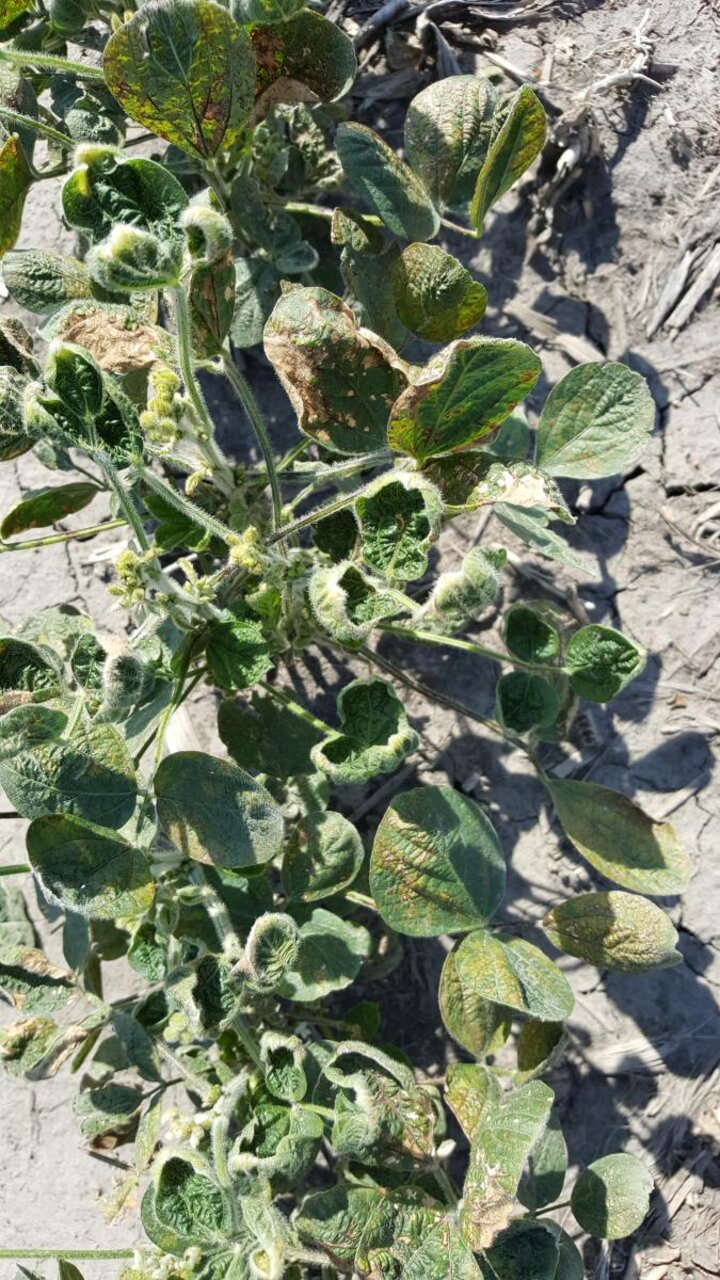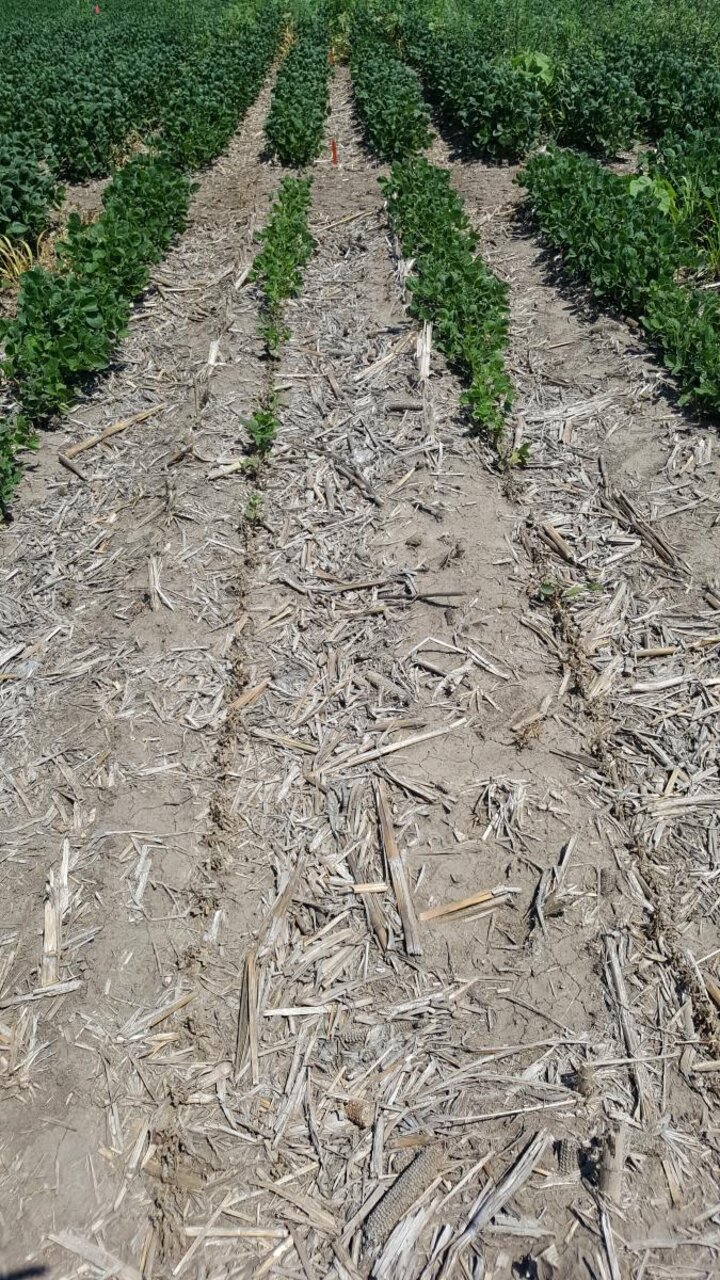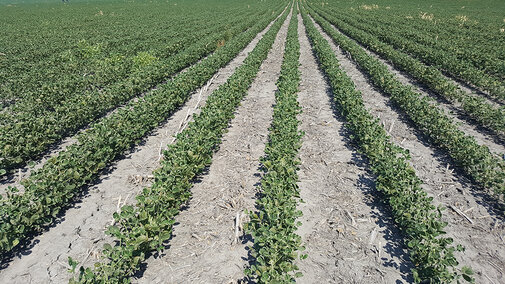Questions about potential dicamba injury to soybean, grapes, tomatoes, and other sensitive crops are increasing to Nebraska Extension educators and specialists as the crop season progresses.
While dicamba herbicide has been available for weed control for a number of years, this was the first year that Roundup Ready 2 Xtend (dicamba-tolerant) soybean and new dicamba-based formulations (XtendiMax, Engenia, or FeXapan) were made commercially available in Nebraska. It's estimated that 500,000 acres of dicamba-tolerant soybean were planted this year in Nebraska.
Dicamba is a phenoxy group herbicide that can result in off-target movement through physical drift, volatility, or temperature inversion. Tank contamination is also an issue if the spray tank is not cleaned properly according to label recommendations. A number of broadleaf crops and plants are sensitive to dicamba, including non-dicamba tolerant soybean, grapes, tomato, watermelons, pumpkins, and several minor vegetable crops raised in Nebraska.


Personal Observations
- Most soybean fields I visited had very consistent dicamba injury symptoms from one end to the other, suggesting off-target movement through volatility (Figure 1).
- Most fields I visited had dicamba injury symptoms on soybean, but not on broadleaf weeds.
- In certain instances off-target movement was potentially from dicamba-based products applied in corn. A number of dicamba-based products labeled for corn (Table 1) may cause symptoms on sensitive crops similar to those caused by XtendiMax, Engenia, or FeXapan.
Other states, including Arkansas, Missouri, Kansas, Iowa, Indiana, Illinois, Tennessee, and Mississippi, have reported hundreds of potential dicamba injury issues. On July 13 the Missouri Department of Agriculture ended its temporary ban (set July 7) on the sale and use of BASF's Eugenia, Monsanto's XtendiMax and DuPont's FeXapan, noting some conditions. The Arkansas Agriculture Department halted the sale and use of dicamba in Arkansas for 120 days, effective on July 11.
| Postemergence Corn Herbicide | Corn growth stage or plant height |
|---|---|
| Banvel | 8”: 1 pt/acre 36": 0.5 pint/acre |
| Clarity | 6” |
| DiFlexx | Broadcast V6 or 36”; V7 to V10 or 36” directed spray |
| DiFlexx DUO | V7 or 36” |
| Status | 36” |
What should growers do if they suspect dicamba injury in a field?
- First, it is important to correctly identify dicamba injury symptoms.
- Scout the field to get an idea of how widespread the injury is. Take photos and notes. Start communication with your neighbors, pesticide applicators, etc.
- Contact the local extension office in your county. (Input from Extension Educators getting calls from producers is a key and timely resource as this issue develops, thus they are included in the process.)
- Contact your crop insurance agent.
- If you decide to file a complaint, contact the Nebraska Department of Agriculture at 402-471-2351.
- If you would like to detect the pesticide residue from the affected plant/soil, consider contacting the South Dakota Agricultural Laboratories at 605-692-7325.

